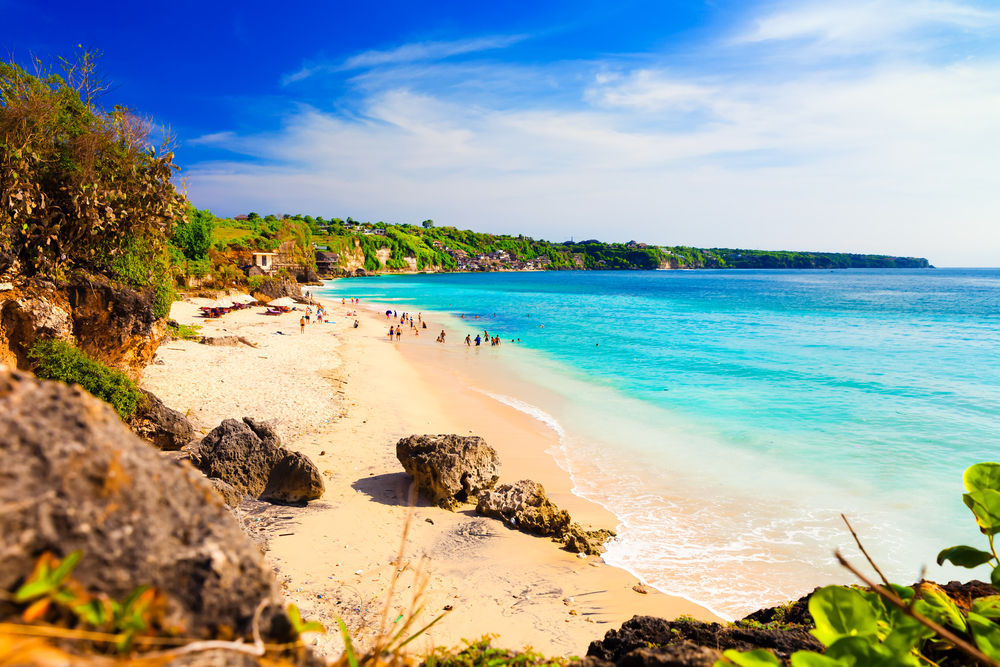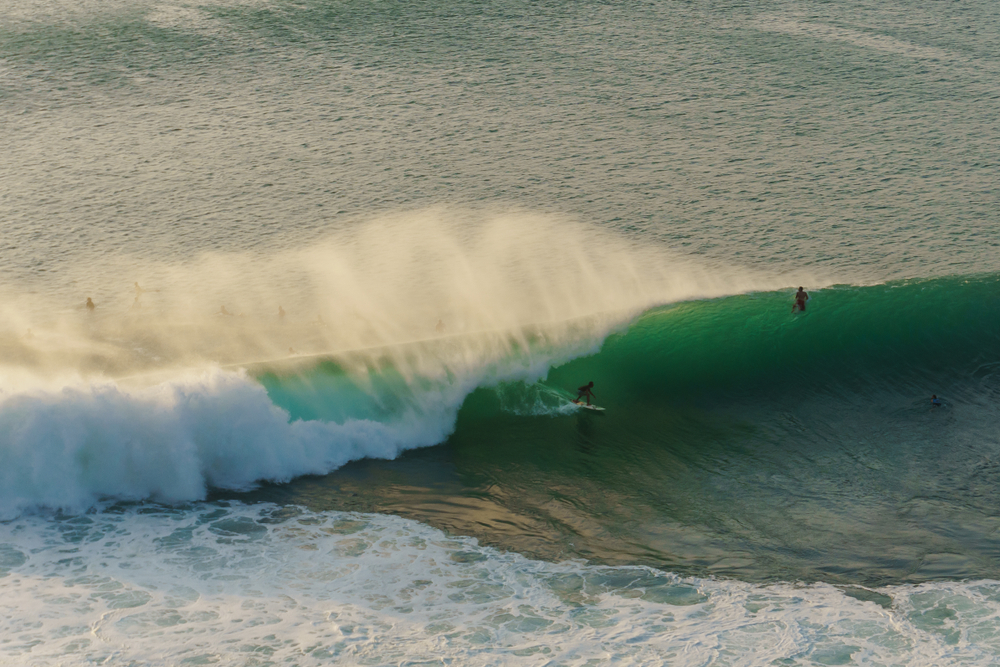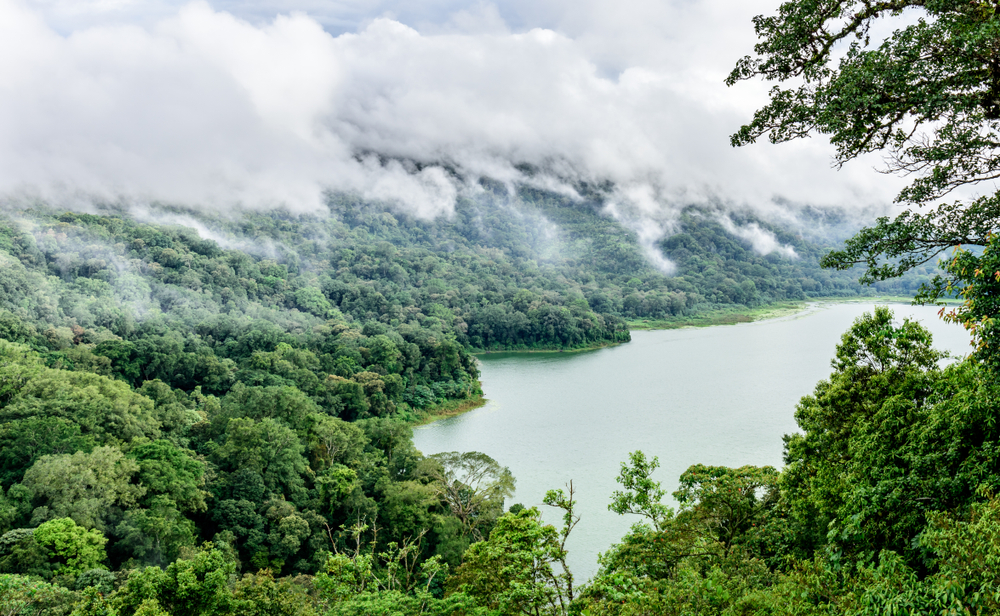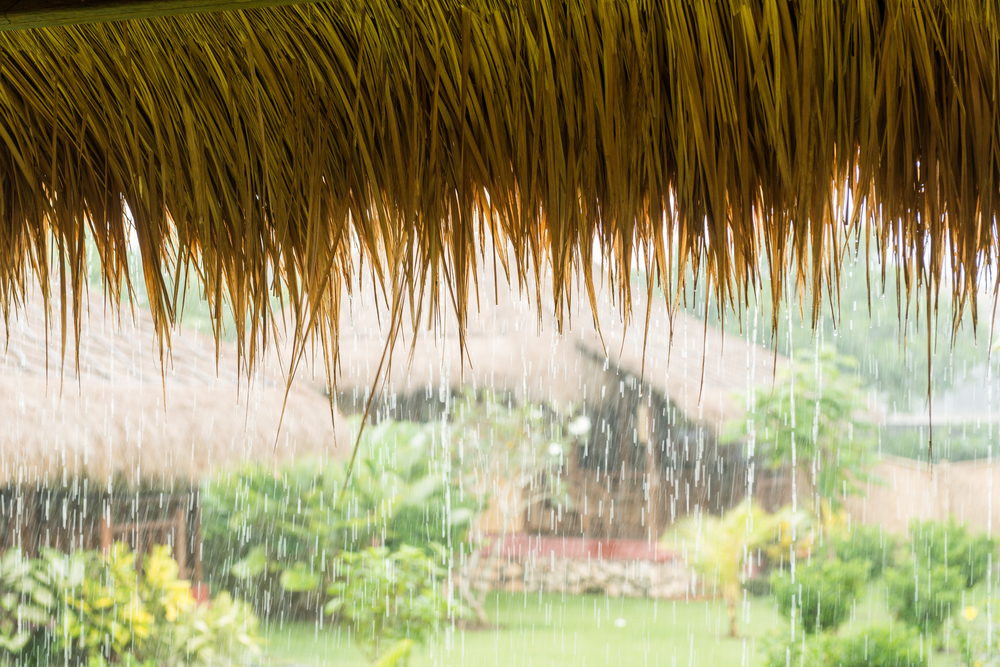Bali’s close proximity to the equator gives it a tropical climate, and visitors can expect to enjoy warm weather all year round.
The temperature in Bali stays fairly consistent throughout the year, ranging from a daily average of 26 °C (79 °F) in the cool season to 27 °C (81 °F) in the summertime. The warmest time of the year is between March and October, with slightly cooler temperatures from June to September.
The main weather change in Bali can be seen between its dry and rainy season when the amount of rainfall varies significantly. The wettest weather is usually between December and February, and the dry season is between April and October.
Depending on how you plan to spend your time on the island, it is important to take the seasons into account when planning your trip! Sun worshippers may want to avoid the island during the rainy season, whilst others may appreciate the occasional break from the tropical sun.
Seasons in Bali
Bali has only two distinct seasons; the dry season, and the rainy season.
Dry season in Bali
The dry season in Bali lasts from April to September. These months typically have the highest temperatures and the least amount of rainfall, with the driest month being August. High season (the island’s busiest time of year) is in the months of July and August.
Travellers at this time of year can expect most days to be dry and sunny, with temperatures around 29 °C (84 °F). This is perfect for beach bums and family groups but bear in mind that Bali can get crowded t this time of year.
Best time to visit: If you want the clear blue skies and high temperatures of the dry season but not the crowds, the best months to visit Bali are April, May, June, and September. The weather at this time of year is still warm and dry, and conditions are slightly less humid, but it’s just outside of that main tourist season. An added bonus of visiting at this time of year is that the cost of accommodation is significantly lower than during the high season. This means you can still enjoy glorious weather, but at a lower price and away from the busiest crowds!

Rainy season in Bali
Bali’s rainy season extends from October to March, with the wettest months being December, January, and February. However, you shouldn’t let this put you off visiting at this time of year. The words ’rainy season’ may conjure images of daily monsoons and waterlogged beaches, but in reality, the weather at this time of year is simply more changeable. Prepare for scattered showers and the odd day of rain, but be sure to pack plenty of sunscreen, too! Visitors at this time of year will also get the best of Bali’s low season and can expect far fewer people and a way more relaxed atmosphere.
Best time to visit:
January is Bali’s wettest month, and sees an average of 350mm of rainfall each year. December and February aren’t much drier, although people arriving during these months can still expect to see sunshine, too. If you want to avoid the rain as much as possible, however, October is the best time to visit. Not only is the temperature still warm and the rainfall relatively infrequent, but this is also the best time of year for water sports activities and scuba diving.

Bali weather by month in Bali
January
Minimum Temperature: 23 °C (73 °F)
Maximum Temperature: 31 °C (88 °F)
Rainfall: 350mm
Days of rain: 19
January is at the height of Bali’s rainy season and has the most frequent and heaviest rainfall. Expect showers most days, with frequent bursts of sunshine. At this time of year, the southern and eastern coastal regions of the island have the best chance of sun, and the heaviest rainfall is likely to be in the mountain regions.
February
Minimum Temperature: 23 °C (73 °F)
Maximum Temperature: 31 °C (88 °F)
Rainfall: 280mm
Days of rain: 18
The wet weather in Bali extends into February, and although this month is a little drier than January, visitors can still expect frequent rain. High temperatures and damp weather mean humidity is particularly high during this month, which can make the weather feel even hotter.
March
Minimum Temperature: 23 °C (73 °F)
Maximum Temperature: 31 °C (88 °F)
Rainfall: 215mm
Days of rain: 20
March marks the end of Bali’s rainy season when the rain starts to become lighter and less frequent. The skies are still likely to be overcast and cloudy most days, but there should be fewer downpours and more bursts of sunshine.
April
Minimum Temperature: 23 °C (73 °F)
Maximum Temperature: 31 °C (88 °F)
Rainfall: 90mm
Days of rain: 12
April is the first month of the dry season, and from here on the weather gets way sunnier and far more settled. The humidity also drops dramatically in April, making the air feel cooler and less sweaty. Despite the good weather conditions, April is a quiet month for Bali tourism, so it is the perfect time to go if you want to avoid the island at its busiest.
May
Minimum Temperature: 23 °C (73 °F)
Maximum Temperature: 31 °C (88 °F)
Rainfall: 75mm
Days of Rain: 8
May is one of the most pleasant months to visit Bali, with low humidity, infrequent rain, and a relaxed atmosphere. Expect lots of sunny days, with the occasional shower and cloudy day.
June
Minimum Temperature: 22 °C (72 °F)
Maximum Temperature: 30 °C (86 °F)
Rainfall: 70mm
Days of rain: 7
The humidity in Bali is lowest between the months of June and October, so this is when the weather feels coolest and freshest. June marks the beginning of Bali’s busy season, and towards the end of the month, the island will start to become noticeably more crowded.
July
Minimum Temperature: 22 °C (72 °F)
Maximum Temperature: 29 °C (84 °F)
Rainfall: 50mm
Days of rain: 4
Low humidity and scarcely a drop of rain – Bali’s weather is perfect in July, and visitors start to arrive in their thousands from all over the world. If you visit at this time be sure to pack sunscreen, as this can be very expensive to buy on the island.
August
Minimum Temperature: 22 °C (72 °F)
Maximum Temperature: 29 °C (84 °F)
Rainfall: 15mm
Days of rain: 3
August is Bali’s driest month, and the best time of year for cloudless days at the beach. It’s no wonder that this is the island’s busiest time of year, and is a popular month for families to visit.
September
Minimum Temperature: 22 °C (72 °F)
Maximum Temperature: 30 °C (86 °F)
Rainfall: 40mm
Days of rain: 3
The start of the new school year sees many of Bali’s tourists leave the island in September, but for many more, this is the best time of year to visit. The atmosphere is more chilled out and the weather is still glorious – perfect for shopping, swimming, and sunbathing.
October
Minimum Temperature: 23 °C (73 °F)
Maximum Temperature: 31 °C (88 °F)
Rainfall: 90mm
Days of rain: 6
The rainy season begins to creep back in October, with rainfall becoming more frequent and humidity levels are beginning to rise. However, the weather during this month is still largely dry an pleasant. For surfers, this is the best time of year to be on the island, and world-class waves can be found all along Bali’s west coast.
November
Minimum Temperature: 23 °C (73 °F)
Maximum Temperature: 31 °C (88 °F)
Rainfall: 150mm
Days of rain: 10
November is a changeable month, weather-wise, and visitors can expect on-and-off rain. However, you shouldn’t let this deter you from visiting, as November also gets its fair share of sunshine, and the first rainstorms have been known to hold off until December in past years.
December
Minimum Temperature: 23 °C (73 °F)
Maximum Temperature: 31 °C (88 °F)
Rainfall: 290mm
Days of rain: 16
The rainy season begins in earnest in December, with showers and rainstorms becoming more common and more frequent. Temperatures and humidity levels are high, and visitors should prepare for mixed weather with intermittent sunshine and storms.

Is there different weather across different regions in Bali?
The weather in Bali varies depending on where you are on the island. The coastal areas are typically warmer and drier than the central region of the island, which is where Bali’s mountains and volcanoes are situated. Elevation in these parts can top 3000m in places, and nighttime temperatures can drop significantly.
The region surrounding Ubud is also cooler than other parts of the island and has more rainfall than the southern areas.
Safety considerations for traveling to Bali
Sunscreen: The sun in Bali can be strong, and fair-skinned people, in particular, are at risk of burning. Sunscreen can be as much as double the price in Bali as it is in other places, so it is worth bringing an effective, high-factor lotion with you from home.

Hydration: It is easy to get dehydrated in Bali, particularly during the rainy season when the humidity is highest. Keep a water bottle with you at all times and remember to keep drinking throughout the day.
Mosquitoes: Mosquitoes are present in Bali all year round, but especially during the rainy season when breeding conditions are perfect. Dengue fever is also more common around this time of year, a viral infection that is spread through mosquito bites. To keep yourself protected, use an effective mosquito repellent and keep your arms and legs covered during sunrise and sunset, when mozzies are most active.
Extreme Weather: Bali’s proximity to the equator means that it is largely protected from tornadoes, typhoons, and tropical cyclones. These tend to pass by the island, causing an increase in wind and rainfall, but no significant danger.
Does Bali have a dry and rainy season? When is it?
Bali’s dry season begins in April and ends in March, with July and August being the most popular months for people to visit. If you want to beat the crowds, however, visit in the months just outside of high season – April, May, June, and September.
Temperatures are still high during the wet season, but the island sees a lot more rainfall during these months. The rainy season extends from October to March, with the dampest months being December, January, and February. October is the best month to visit during the rainy season, as it typically sees only 90mm of rainfall.

When is the best time to travel to Bali?
For flawless summer weather, the best time of year to visit Bali is between the months of April and September. Although the driest of these months are July and August, this is when the island gets busiest, and the crowds can be off-putting for some. To get the best of the weather without compromising on your peace and quiet, visit Bali in April, May, June, or October.
Sun seekers should aim to arrive in June or September when there is less rain. Water sports enthusiasts, snorkelers, and scuba divers should aim to visit in this month when conditions for these activities are at their best.
